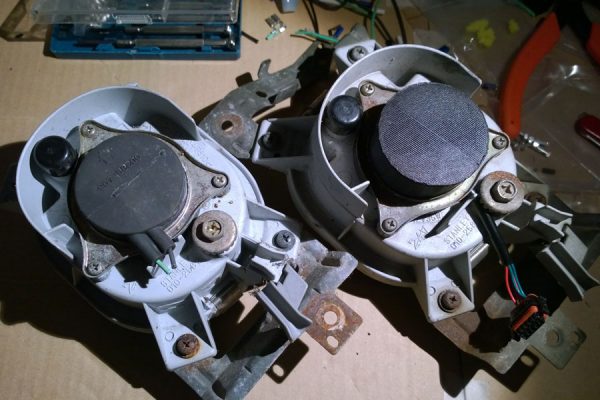I can’t truly explain why I needed these in my life but then you don’t have to look far on the blog to see that I can get a bit obsessed with vehicle lighting. The long-term plan is to wire these in as main beam spotlights (as on my old Jimny) but just installing them was complicated enough for now!
Why so complicated? It all stems from the extra cooling high-powered LEDs require. Some units use passive heatsinks or braiding whilst others add fans to the equation to get rid of the heat, but the upshot is there’s an awful lot more behind an LED bulb than there is on a traditional halogen or even HID bulb (ignoring the ballast on the latter!). All of this extra bulk should also be kept inside the bulb’s housing so the heatsinks or fans don’t become clogged with dirt and debris and lose their efficiency (or break). Tricky…
Typically the JDMny’s foglight housings are super-slim, have limited space behind them, and sit within dirt-flinging distance of the front wheels but, on the plus-side, feature a large rubber access cap centred round the bulb at the back of the housing. With access to a 3D printer it was possible to create a new, extended access cap which could hold the LED bulb in place and provide good air flow whilst adding very little to the overall dimensions of the housing. Using fan-based Cyclops Adventure Sports H3 bulbs (purchased from 2 Wheel Motor) also helped to keep the air moving through the cap and the housing as much as possible.






I picked up a spare set of matching foglights from a Suzuki Ignis – UK Jimnys use a completely different setup – which provided me with a pair of OEM wiring connectors to make the LED bulbs a simple plug-and-play affair. It also allowed me to build everything up off the car and thus spend as much time out of the foul winter weather as possible 🙂

Light levels are comparable with the standard halogens despite the LEDs drawing 35w less per side (20w vs 55w), something I’m sure the alternator will thank me for once I turn them into main beam spotlights. It’s also interesting to see that, having kept the exposure levels consistent across the photographs, the previous Jimny’s HID-based spot-fog setup is still by far the brightest… once they’d warmed up of course!
